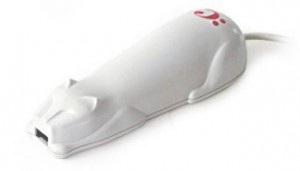Ubiquitous Pricing Information

It’s better to be currently knowledgable than to be just knowledgeable. This is true with almost anything, including shopping. While many might argue shopping is a chore, others, including this author, would consider it a sport, much like horse racing. The sport of shopping is particularly competitive during the holidays.
In 2009, over 10 billion dollars was spent on Black Friday alone. The ‘holiday’ got it’s name from the notion that the holiday season takes many retail outlets from the “red” indicating loss, into the “black”, indicating profits. This year, things are changing. The amount of savvy available to almost anyone is changing the playing field.
In previous years, savvy shoppers would scour websites or newspaper for circulars indicating Black Friday specials, and then line up early in the morning the day after Thanksgiving to make sure they got the best possible deal. Now, applications like Amazon’s Price Check App make it extraordinarily easy to know when you’re over paying. The Price Check application uses voice, visual, or search cues to be able to give you pricing information for Amazon. Naturally, this is all powered by their phenomenal API which you can use in smart phones or websites. It’s so prevalent, Tweets about it showed up in my Twitter stream. Jeff Moriarty (Who bears a strong resemblance to a certain Burger King commercial flute player and whose excellent Twitter stream you can follow here) said: 
Amazon, as novel as they are, weren’t the firs to come up with bar code based price comparison. In the late 1990’s Radio Shack spear headed an effort to promote a product called a Cue Cat. It was a bar code scanner that hooked up to your computer via PS/2 and when you would slide it over a barcode, would use it’s proprietary software to connect you to a website about the product, and maybe even some pricing comparisons. Unfortunately for Cue Cat, most people didn’t like shopping from their desktop computer, and the Cue Cat grew a cult following amongst hackers because it was free, readily available, and very simple.
Now, a few nerds (Sorry, Jeff) price checking something isn’t anything to get excited about, or is it? In order to use this new version of the technology there are several components that need to be working together. First, you’ll need one click purchasing with Amazon, which means you’ve done some ecommerce with them before. Also, you’ll need a smart phone with a healthy internet connection.
According to Gartner a leading IT research firm, smart phones are exploding in popularity. They’re up over 50% from the same quarter in 2009. As of the second quarter of 2010, smart phones account for 19 percent of all phones in the world. This means that only 1 in 5 people has the ability to do what Jeff has done. What happens when that number is 4 in 5? Early adopters like Amazon are positioning themselves to dominate
The real opportunity here isn’t just for Amazon. It’s for a third party. While being able to compare Best Buy and Amazon is nice, they’re only two sources of pricing information. The real win for consumers is going to come from diversity. Amazon’s API allows pricing information to every item in it’s data base. Walmart and BestBuy have similar programs. The real popularity is going to happen as the smart phone saturation increases, and the savvy shopper learns to embrace technology. A crafty person has the opportunity to create a full featured application like the Amazon app, but that also includes pricing information from Best Buy, Walmart, and various other retailers and e-tailers. The diversity has worked well for sites like PriceWatch.com, but the readily available information you can have by just pointing your phone at what you want to buy is what takes great information, and adds a high level of currency to it.
A time is coming where you can be a shark shopper, and not have to do anything more than break out your phone. Are you ready? How will you take advantage of these new technologies?
Contributing Factors For This Trend
- High power Smart Phones lowering in price and complication, increasing in popularity.
- OCR and Voice Recognition Technology Improving, moving to mobile platforms.
- Web API’s
- Increased speed and reliability of mobile internet
- UX Experts like Amazon decreasing complication of searching for products.


Nice post dude! I always wanted a damn cue cat when I was a kid, but I was like 10 and parents wouldn’t give me the time of day. I also went black friday shopping this year and wanted to roundhouse kick everyone because I could have been at home in my boxers with some booze saving money and getting more stuff.